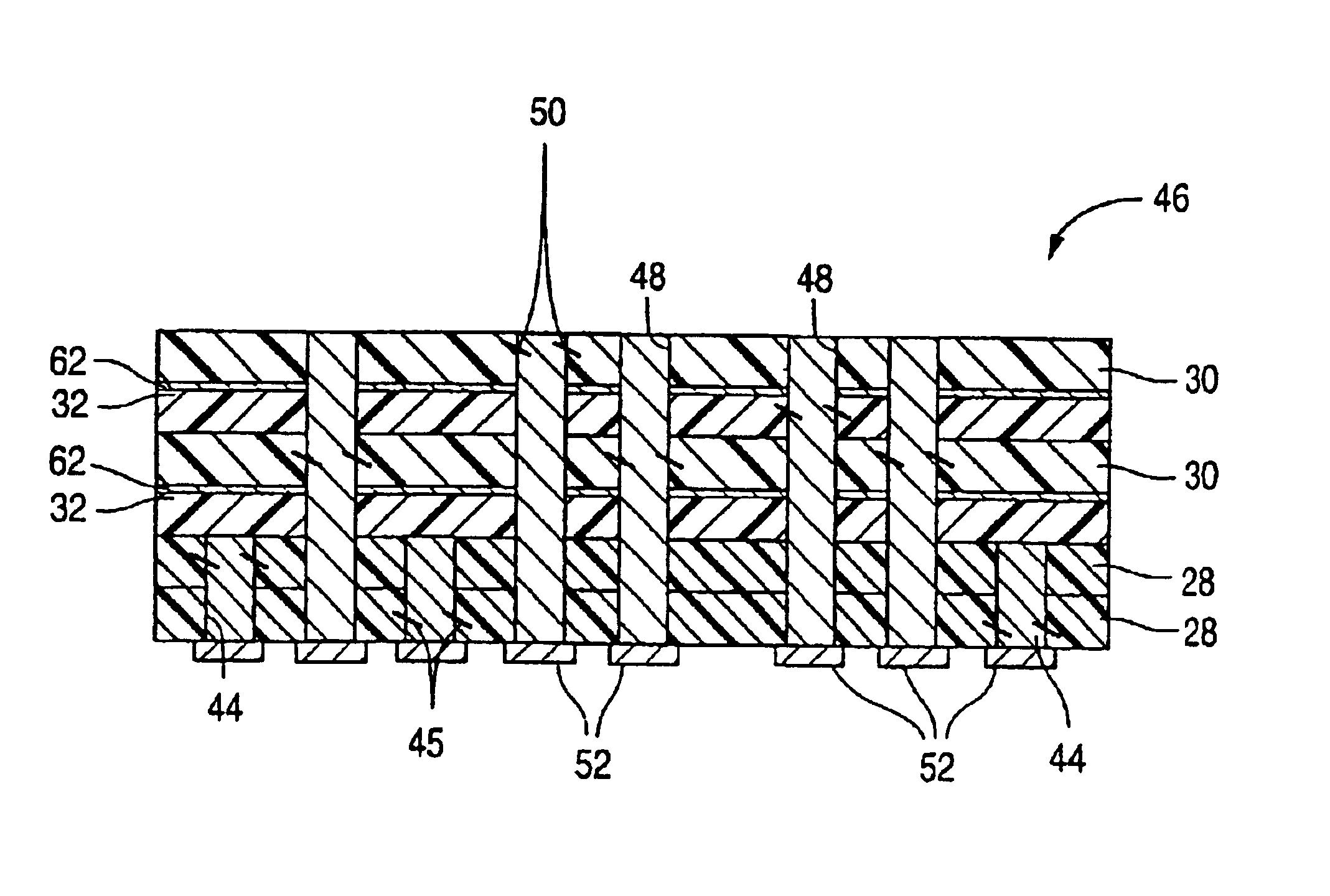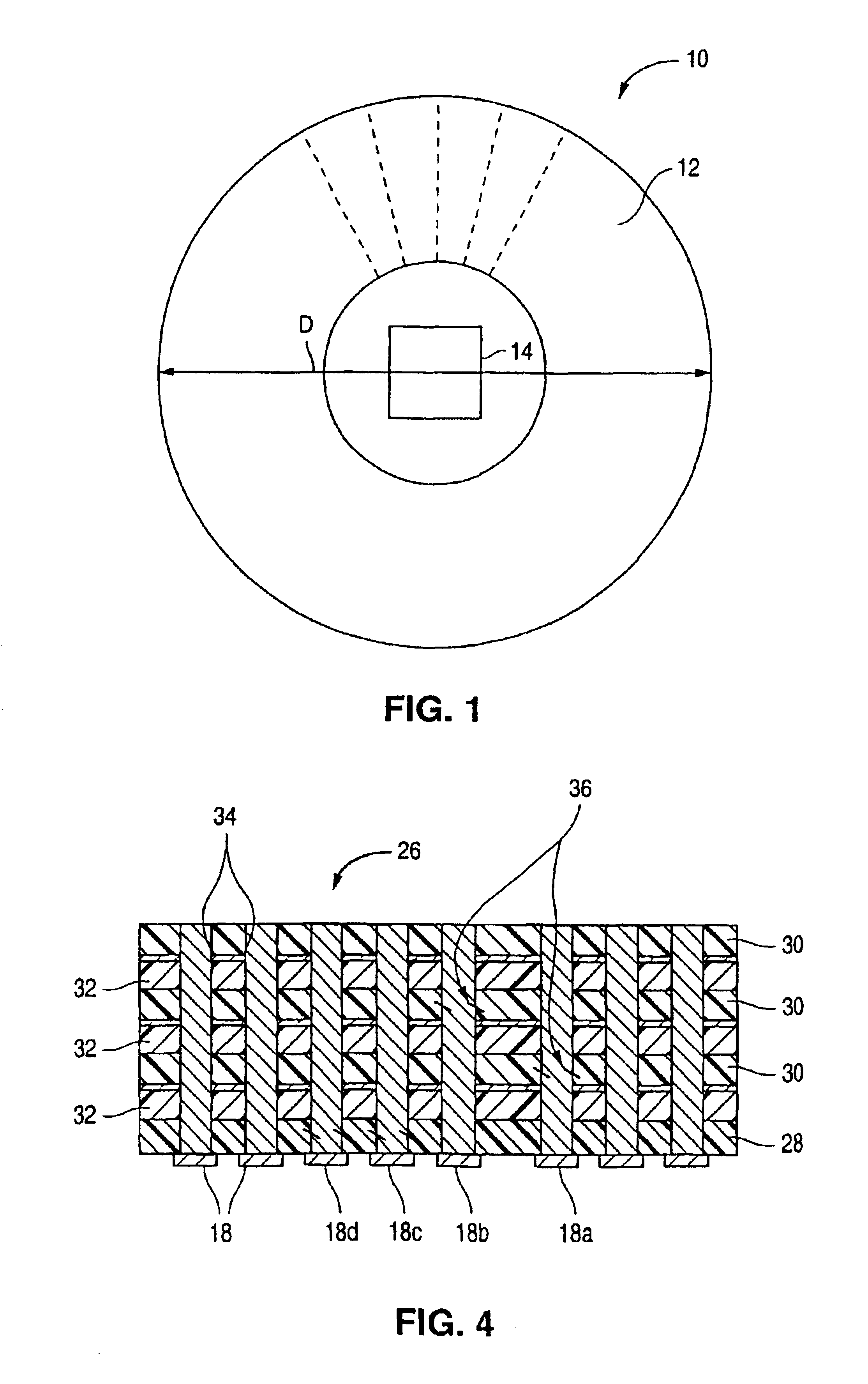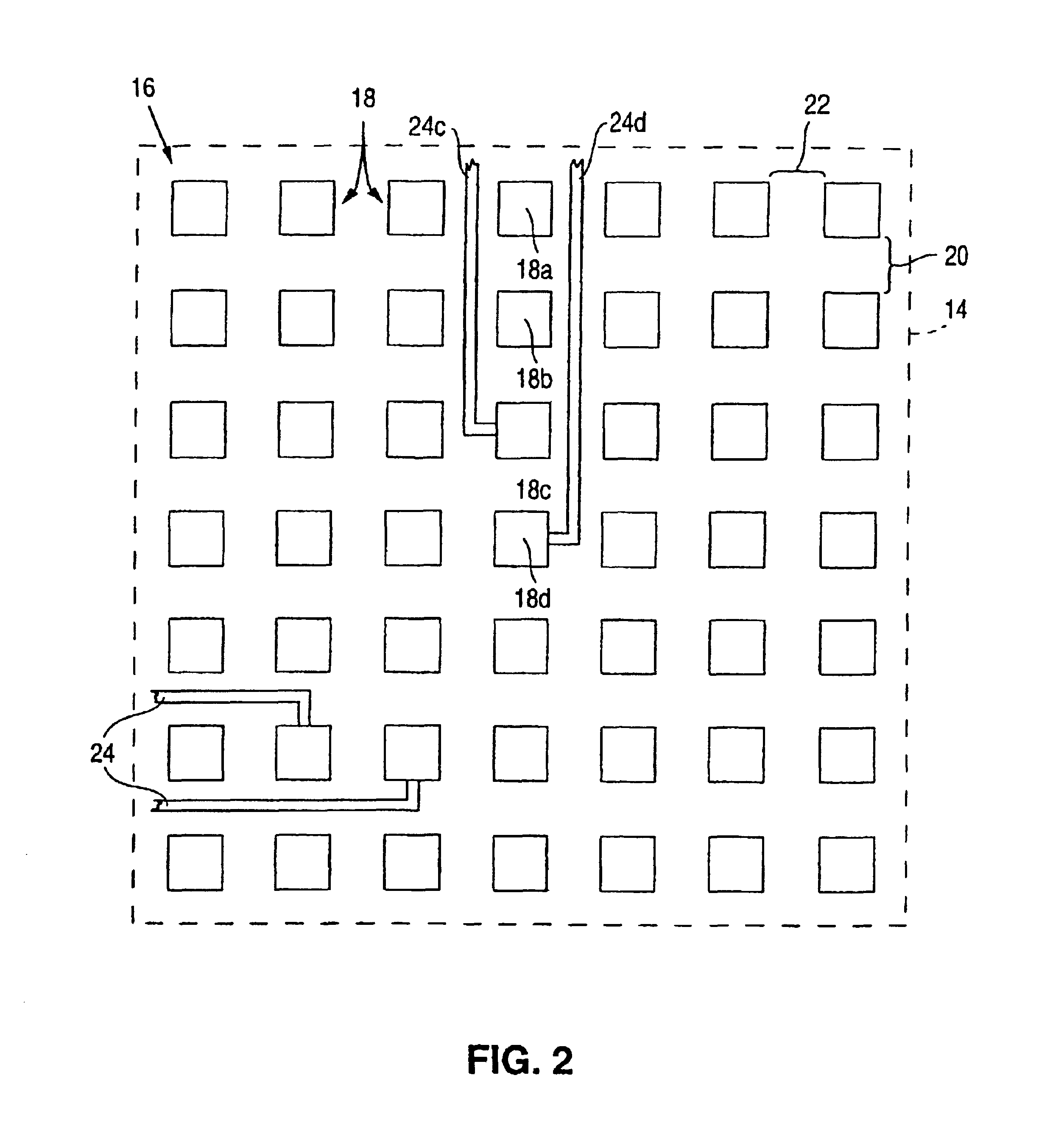Method for manufacturing a multi-layer printed circuit board
a printed circuit board and multi-layer technology, applied in the direction of printed circuit aspects, printed element electric connection formation, conductive pattern formation, etc., can solve the problems of increased pcb size, inefficient routing of signal traces on signal layers, and difficulty in laying down traces, so as to facilitate the routing of signal traces
- Summary
- Abstract
- Description
- Claims
- Application Information
AI Technical Summary
Benefits of technology
Problems solved by technology
Method used
Image
Examples
Embodiment Construction
It is to be understood in the following discussion that a description of only an idealized PCB is given for purposes of illustrating the concepts of the invention. An actual multilayer PCB could have far more layers and many more vias than are shown in the following example. Referring to FIGS. 7(A)-7(E), a preferred multilayer PCB manufacturing method of a first embodiment of the present invention is shown. Turning now to FIGS. 7(A) and 8, metalized patterns or regions 54, 60, and 62 are masked onto individual power layers 28, signal layers 30, and ground layers 32, respectively. Although the ground layers 32 are shown as being interspersed between each of the signal layers 30, this need not be the case. Ground layers 32 may be positioned between groups of signal layers, depending upon the circuit design and the need for signal isolation. It also is to be understood that while the regions, traces and contacts are depicted as only being on one side of the PCBs, the regions, traces an...
PUM
| Property | Measurement | Unit |
|---|---|---|
| diameter | aaaaa | aaaaa |
| diameters | aaaaa | aaaaa |
| diameters | aaaaa | aaaaa |
Abstract
Description
Claims
Application Information
 Login to View More
Login to View More - R&D
- Intellectual Property
- Life Sciences
- Materials
- Tech Scout
- Unparalleled Data Quality
- Higher Quality Content
- 60% Fewer Hallucinations
Browse by: Latest US Patents, China's latest patents, Technical Efficacy Thesaurus, Application Domain, Technology Topic, Popular Technical Reports.
© 2025 PatSnap. All rights reserved.Legal|Privacy policy|Modern Slavery Act Transparency Statement|Sitemap|About US| Contact US: help@patsnap.com



